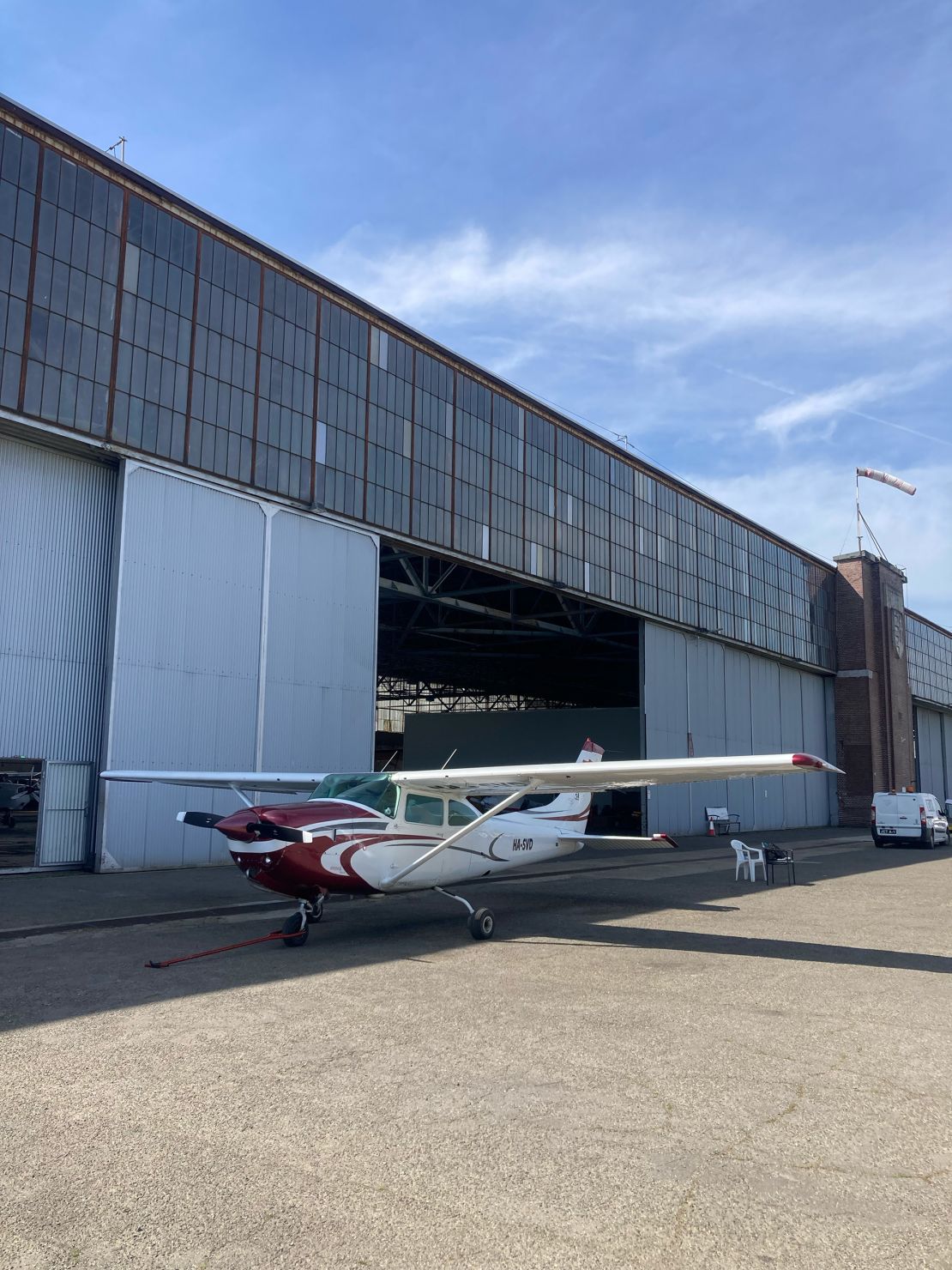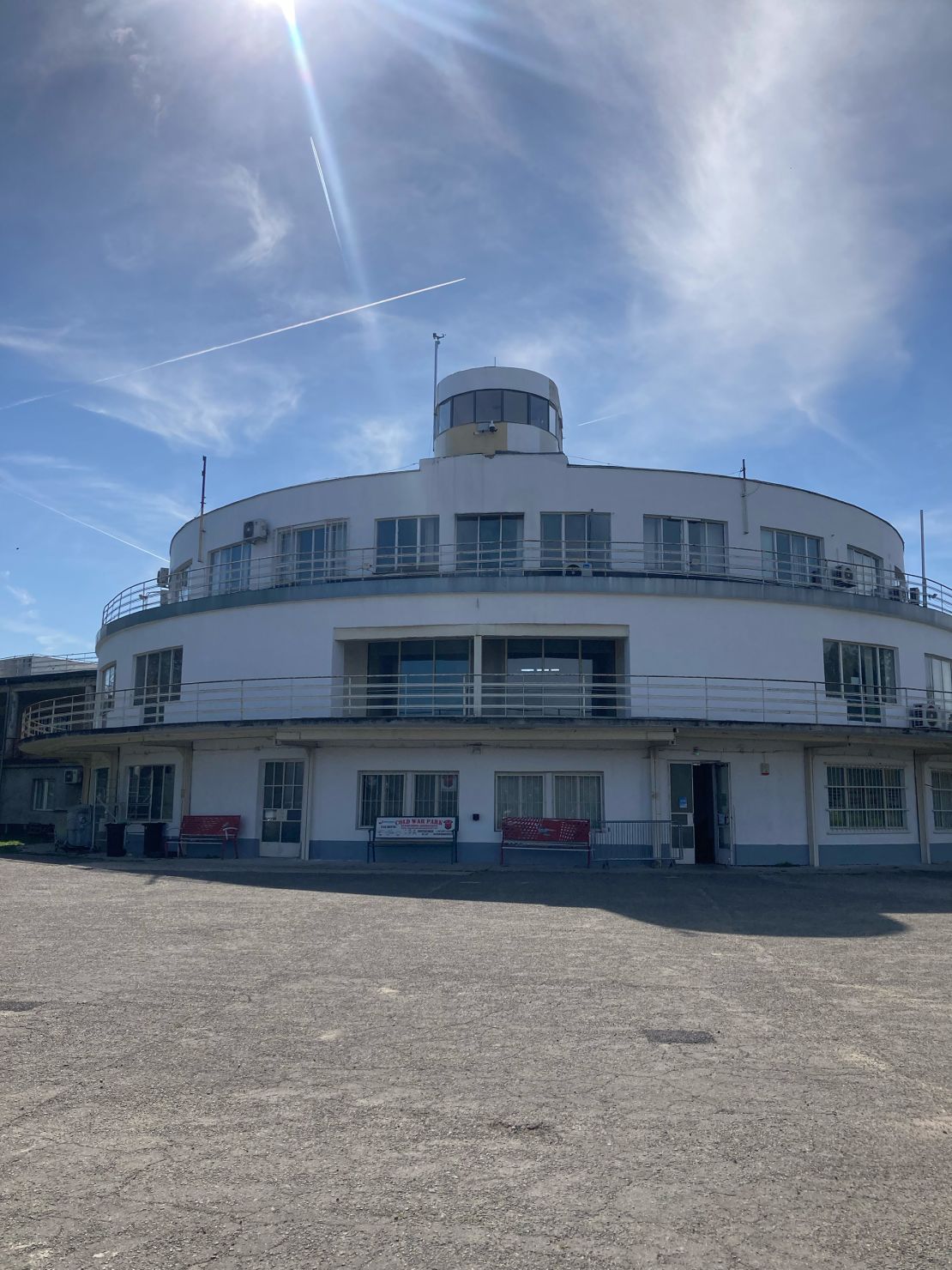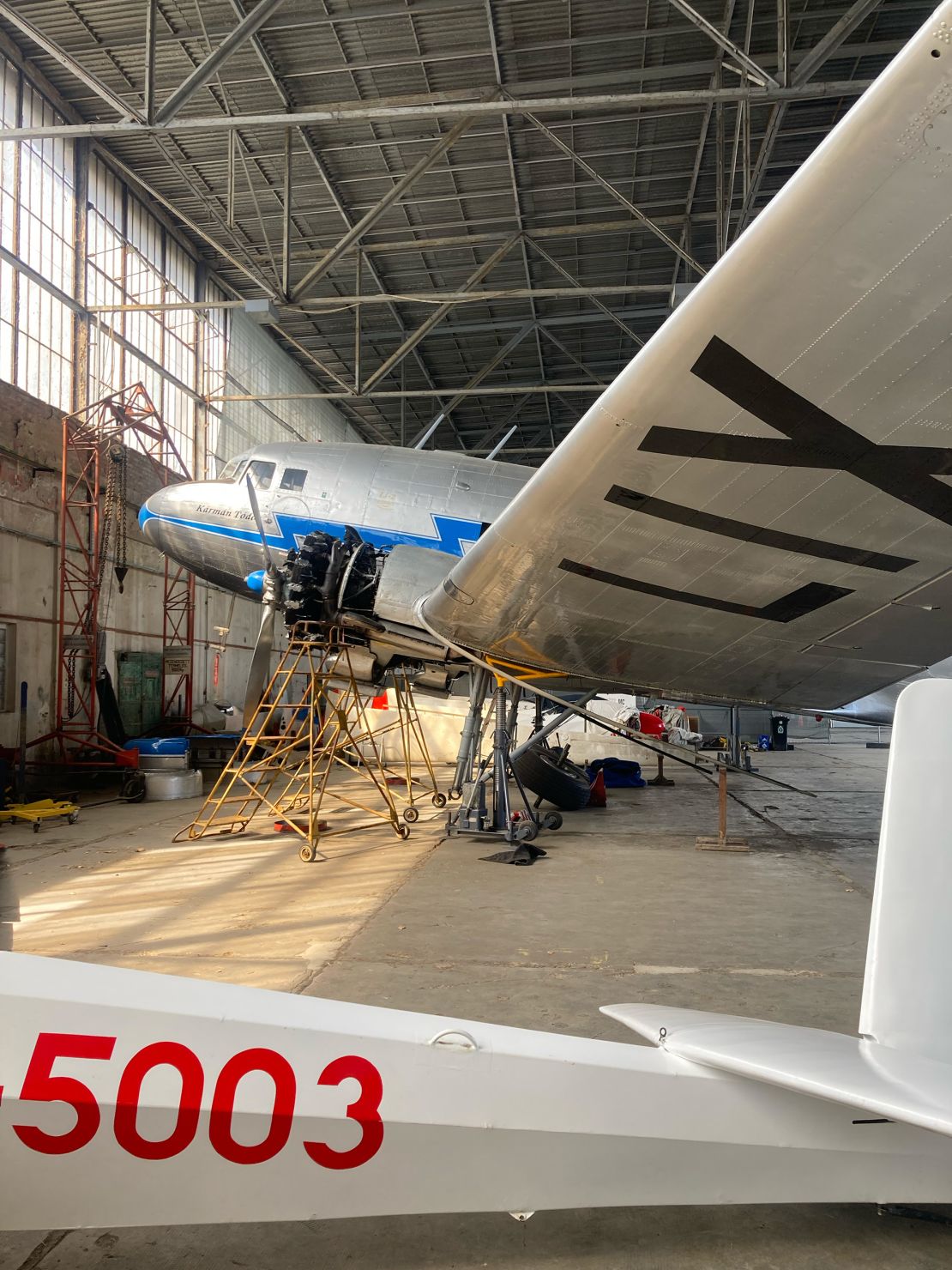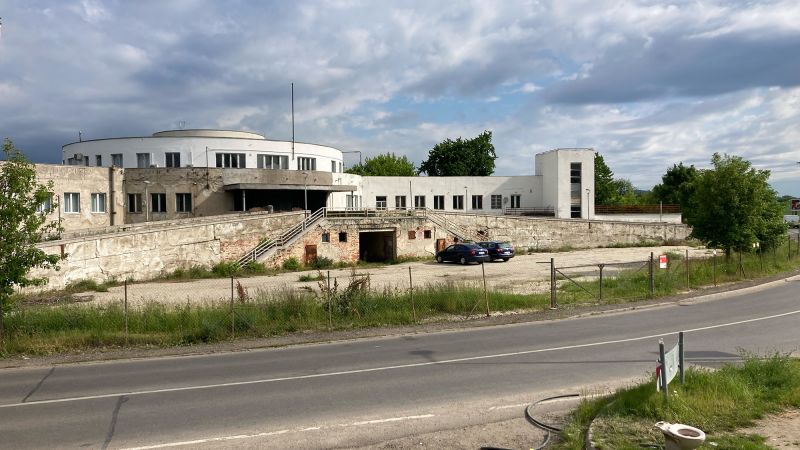Editor’s note: Sign up for Unlocking the World, CNN Travel’s weekly newsletter. Get news about destinations, plus the latest in aviation, food and drink, and where to stay.
CNN
—
Walking into Budapest’s Budaörs Airport feels more like stepping inside a time capsule than an airfield.
Perched on the edge of Budapest’s XI District, Budaörs was the country’s first international airport and has been operating continuously since 1937.
Now its grassy airfield is hums with the buzz of small aircraft, as hobby pilots, private planes, and helicopters take to the sky daily.
The elegant Bauhaus terminal, born from a 1930s design competition won by architects Virgil Bierbauer and László Králik, is now a protected building.

Today, the soft morning light streams through its glass-paneled roof, casting geometric shadows across a space that has remained mostly unchanged for nearly 90 years.
Its clean lines, a circular main hall, curved banisters, and an intuitive layout (complete with a curbside passport control area and rain-sheltered car drop-off) reflect the modernist functional design characteristic of the era, providing a glimpse into the airport’s fascinating past.
A landmark in Hungary’s aviation history, Budaörs was once home to Europe’s largest hangar.
The airport’s location, near the city center and a railway line, made it an ideal choice — until it wasn’t.
As demand for air travel grew, Budaörs lacked the space to grow with the changing times.
After World War II, international traffic shifted to a new facility now known as Budapest Ferenc Liszt International Airport. But Budaörs didn’t fade into obscurity. Instead, it evolved.

“Out of all the small aircraft airports in Hungary, this is probably one of the busiest,” says Eszter Molnár, who has managed airport operations for the past six years.
“We get a lot of private planes from Germany, the Netherlands, France, Romania — pilots fly in, spend a night or two in Budapest, and go back. Some even continue to other European cities.”
You’d be forgiven for thinking the airport was abandoned if approaching from the back, due to the chipped paint and crumbling masonry.
But once you cross through the gates and head towards the airfield, it’s clear that Budaörs is very much alive, with helicopters crisscrossing the skyline and a fleet of small aircraft parked up.
One of the key operators here is FlyCoop, a company that started with agricultural aircraft services in the 1990s and has since grown into a full-service aviation firm.
With a fleet of over 40 aircraft, FlyCoop offers everything from air taxis and aircraft rental services to helicopter transfers — especially popular during Formula 1 weekends at the nearby Hungaroring racetrack. It also offers full-time flight training programs aimed at both Hungarian and international aspiring pilots.
“When it comes to flying, we can handle everything in-house,” says Gergely Ocsovai, FlyCoop’s Training Coordinator.
“We operate sightseeing flights and air taxi routes and offer pilot training for aircraft and helicopters that lead all the way to a commercial license.”

Forget long security lines and departure lounges. Sightseeing flights here are casual, quick, and personal, ranging from 25-minute city loops to hour-long excursions over the Danube Bend, Visegrád, and Esztergom.
Book in advance, arrive on time, meet your pilot, and you’ll be airborne within minutes. The light aircraft and helicopters seat three to five people.
Want to soar over Balaton — the Hungarian lake that’s the largest in Central Europe? That’s an option, too.
And while the airport doesn’t offer international departures in the traditional sense, Budaörs still hosts flights from abroad, mostly hobby pilots or private planes coming from countries within the European Union’s open-border Schengen Area.
Immigration and customs officials are arranged on demand for travelers flying in from outside the region, or those heading further afield.
“If a plane is coming from outside Schengen or planning to leave the Schengen Area, we need 24 hours’ notice,” Eszter explains.
“We coordinate with customs and immigration officers from the Liszt Ferenc airport, and they come here to process passengers on arrival or departure. It’s an unusual setup, but it works.”

Beyond its fleet of modern aircraft, Budaörs Airport is also home to something rarer: working pieces of aviation history.
A few extraordinary vintage planes are parked up in the hangar next to the small modern airplanes and helicopters.
The Goldtimer Foundation, a nonprofit dedicated to preserving old aircraft in flying condition, maintains these historic flying machines.
“These planes require constant care to keep them airworthy,” says Eszter. “The foundation restores and even rebuilds them from scratch if needed.”
A Soviet-era Lisunov Li-2 passenger plane rests at the center, awaiting its next flight. Built in Tashkent in 1949 and delivered to Hungary in the same year, the aircraft once served in both military and civilian capacities.
Today, it’s the only one of its kind still taking to the skies. From April through October, passengers can book a ride for a fee of around $50 for a 15-minute ride on certain Saturdays.
Other smaller vintage craft also take to the skies these fundraising weekends, flying back-to-back from 10 a.m. to 6 p.m.
The site isn’t only popular with aviation enthusiasts. Thanks to its period architecture, Budaörs also makes for a great filming location, and made a brief appearance in the 1996 movie “Evita,” starring Madonna.
It’s also a popular event space, with music festivals or corporate events regularly held at the site.
On this particular Monday, the airport’s grounds are still being tidied after an electronic music festival at the weekend — with vending machines wheeled away and trash collected.
“People come here for an event and end up booking a flight,” Eszter says. “Like the House Picnic, an electronic dance festival we just hosted this weekend, we go out and we tell people they can actually book a flight, and people want to join.
“We saw huge interest over the weekend, people came here to dance and party, but would then go up and fly over the city.”
Even for those planning to stay on the ground, Budaörs Airport is worth a visit. It’s possible to stroll in and watch the comings and goings of small planes and helicopters.
The atmosphere is relaxed, friendly, and familial, and there’s a sense that everyone here truly loves aviation.
“Every day feels like stepping into history,” says Eszter. “Yes, the building looks a little worse for wear — it’s a protected structure, and restoration requires specialists. But everyone here is passionate about planes and deeply committed to this airport.
“It’s important to ensure that the airport stays alive, and we just want to see it preserved and used, not left to crumble.”


